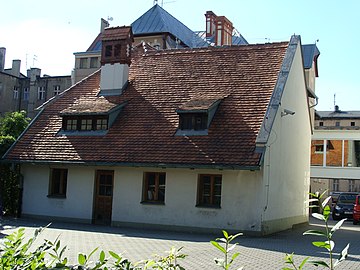
Freedom Square in Bydgoszcz is located in Bydgoszcz, Poland, in downtown area, between Gdańska Street and the park Casimir the Great.

Tenement Freedom Square 1 is an historic house of Bydgoszcz. It is often displayed on postcards as one of the turn of the century iconic building in Bydgoszcz. The architect, Józef Święcicki, is also the builder of the "Pod Orłem" hotel, the oldest hotel in downtown Bydgoszcz. The building is located on the east side of Gdańska Street, on the corner of Plac Wolności.
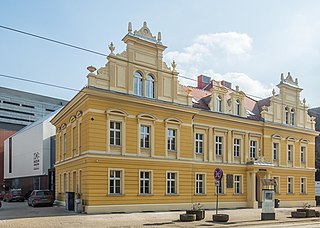
The District Museum Building in Bydgoszcz is an historical building in Bydgoszcz located at 4 Gdańska Street.

The Pomeranian Arts House is a building of cultural and historical significance located at 20 Gdańska Street in Bydgoszcz, Poland. It has housed chronologically:

The tenement at 22 Gdańska street is a tenement located in downtown Bydgoszcz.

Thomas Frankowski Tenement is a house located in Bydgoszcz, at 28 Gdańska Street.

The Villa Wilhelm Blumwe is an historic house in central Bydgoszcz, registered on the Kuyavian-Pomeranian Voivodeship Heritage List.

The tenement at 91 Gdanska street is a historical habitation building located on Gdańska Street, in Bydgoszcz, Poland.

The Villa Fritz Heroldt is a historical house in downtown Bydgoszcz. It is registered on the Kuyavian-Pomeranian Voivodeship Heritage List.

Adam Mickiewicz Alley is one of the main streets of downtown district in Bydgoszcz, where several buildings are registered on the Kuyavian-Pomeranian Voivodeship Heritage List.

Ossoliński Alley is a large dual carriageway road located in downtown Bydgoszcz.

Kopernika street is located in central Bydgoszcz. Several buildings on Kopernika Street are registered on the Kuyavian-Pomeranian Voivodeship Heritage List. The street is named for Nicolaus Copernicus.

Carl and Wilhelm Blumwe were successful German entrepreneurs, industrialists and businessmen in Bromberg from the second half of the 19th century. Their buildings and realizations are still standing today in the city.
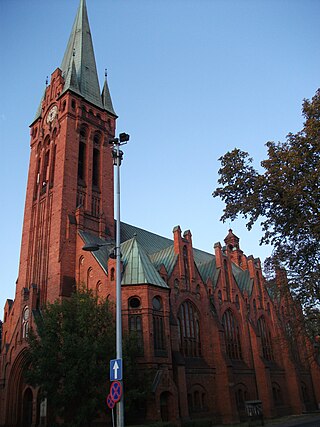
Saint Andrew Bobola's Church is located in downtown Bydgoszcz, Poland, on Kościelecki Square. Its patron saint is the Polish Jesuit Andrew Bobola. The edifice, completed in 1903, was designed by German architect Heinrich Seeling. It was registered on the Kuyavian-Pomeranian Voivodeship Heritage List on December 15, 1998.
Rudolf Kern was an important designer and builder in Bydgoszcz, at the end of the Prussian period of the city. Most his works have been realized between 1903 and 1914. His artistic style relates to Art Nouveau and Modernism.
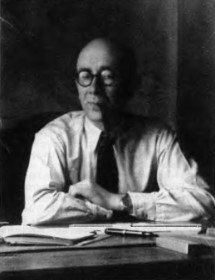
Jan Kossowski (1898-1958) was a Polish architect and builder, mainly associated with Bydgoszcz. His professional activity spanned from the interwar period to the 1940s. His artistic style is mainly connected with Modern Architecture.

Jana Zamoyskiego Street is located in downtown district, in Bydgoszcz, Poland. Most of its buildings display Eclectic, Art Nouveau or early modernist architectural styles. One of them is registered on the Kuyavian-Pomeranian Voivodeship heritage list.
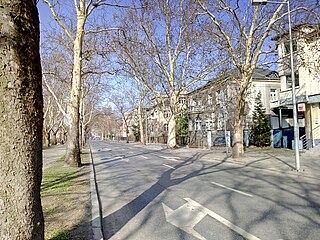
Markwarta street is located in the downtown district of Bydgoszcz, Poland. Situated in its path are two green areas and several villas built during the Polish interwar period.

Józef Weyssenhoff Square is an open place in the downtown district of Bydgoszcz, Poland; several of its buildings are registered on the Kuyavian-Pomeranian Voivodeship Heritage List.

The Church of the Savior is a neo-Gothic Lutheran church in Bydgoszcz. Located on Savior Square along Warszawska Street, it was called Christ Church till 1945.




